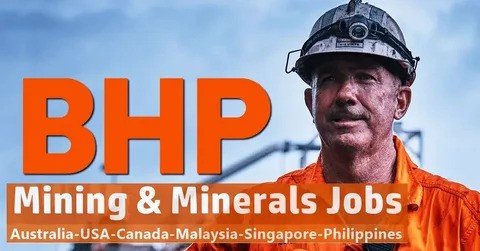Mining Jobs in Australia
Australia’s mining industry is a global powerhouse, driving economic growth, innovation, and employment across the continent. From the iron ore-rich Pilbara region to the lithium mines of Western Australia and the coal basins of Queensland, the sector is synonymous with high wages, cutting-edge technology, and adventure. As the world’s top exporter of iron ore, lithium, and gold—and a critical player in the renewable energy transition—Australia’s mining industry offers lucrative careers for skilled professionals, tradespeople, and newcomers alike.
This comprehensive guide explores the landscape of mining jobs in Australia, including key roles, regional opportunities, certifications, immigration pathways, and how automation and sustainability are reshaping the industry’s future.
Why Australia’s Mining Sector is a Global Leader
- Resource Wealth:
- Australia holds the world’s largest reserves of iron ore, lithium, gold, and uranium, along with significant deposits of coal, copper, and rare earth minerals.
- The mining sector contributes 14% of Australia’s GDP and accounts for 75% of exports, generating over $400 billion annually.
- Global Demand:
- Iron Ore: Fuels steel production in China, Japan, and South Korea.
- Lithium: Powers the electric vehicle (EV) revolution, with Australia producing 55% of global supply.
- Coal: Thermal and metallurgical coal remain key exports despite global decarbonization efforts.
- Technological Innovation:
- Australia leads in automation, using drones, AI, and autonomous trucks (e.g., Rio Tinto’s AutoHaul).
- Labor Shortages:
- Over 24,000 mining jobs were vacant in 2023, with shortages in engineering, heavy machinery operation, and skilled trades.
Types of Mining Jobs in Australia
1. Operational Roles
- Drill Operators: Conduct exploration or production drilling.
- Average Salary: 120,000–180,000 AUD/year.
- Haul Truck Drivers: Operate 400-ton dump trucks in open-pit mines (FIFO roles).
- Average Salary: 110,000–150,000 AUD/year.
- Blast Crew: Handle explosives for rock fragmentation (requires a Shotfirer License).
2. Technical and Engineering Roles
- Mining Engineers: Design mine layouts and optimize extraction processes.
- Average Salary: 140,000–220,000 AUD/year.
- Geologists: Identify mineral deposits and oversee exploration.
- Average Salary: 130,000–200,000 AUD/year.
3. Trades and Maintenance
- Electricians: Maintain high-voltage systems in processing plants.
- Average Salary: 110,000–160,000 AUD/year.
- Heavy Diesel Mechanics: Service mining trucks and excavators.
- Average Salary: 120,000–170,000 AUD/year.
4. Health, Safety, and Environment (HSE)
- Safety Advisors: Enforce protocols to prevent accidents.
- Average Salary: 130,000–190,000 AUD/year.
- Environmental Scientists: Mitigate ecological impacts and ensure compliance.
5. Leadership Roles
- Mine Managers: Oversee daily operations, budgets, and staff.
- Average Salary: 200,000–400,000 AUD/year.
Regional Hotspots for Mining Jobs
1. Western Australia (WA)
- Pilbara Region: The epicenter of iron ore mining (BHP, Rio Tinto, Fortescue).
- Goldfields: Super Pit in Kalgoorlie (one of the world’s largest open-pit gold mines).
- Lithium: Greenbushes Mine (largest hard-rock lithium source globally).
2. Queensland (QLD)
- Bowen Basin: Coal mining for export (Glencore, BMA).
- Copper: Mount Isa Mines.
3. South Australia (SA)
- Olympic Dam: BHP’s uranium, copper, and gold operation.
- Roxby Downs: Expanding critical minerals projects.
4. New South Wales (NSW)
- Hunter Valley: Thermal coal mines (Yancoal, Glencore).
- Cadia Valley: Gold and copper production.
5. Northern Territory (NT)
- Ranger Uranium Mine: Transitioning to rehabilitation.
- Tanami Gold Mine: Remote site operated by Newmont.
How to Secure a Mining Job in Australia
1. Education and Certifications
- Entry-Level: Certificates in Resources and Infrastructure (e.g., RII30920 – Civil Construction).
- Advanced Roles: Degrees in mining engineering, geology, or environmental science (Curtin University, UNSW).
- Licenses:
- HR (Heavy Rigid) or HC (Heavy Combination) License for operating machinery.
- Standard 11 (QLD) or Section 44 (WA): Mandatory safety inductions.
2. Gain Experience
- FIFO (Fly-In-Fly-Out) Roles: Work 2 weeks on/1 week off in remote sites.
- Apprenticeships: Paid programs with employers like Thiess or Downer Group.
3. Immigration Pathways
- Temporary Skill Shortage (TSS) Visa (Subclass 482): For roles on the Short-Term Skilled Occupation List (e.g., Mining Engineer ANZSCO 233611).
- Skilled Independent Visa (Subclass 189): Permanent residency for eligible skilled workers.
- Regional Visas (Subclass 491/494): Priority for workers in areas like Pilbara or Kalgoorlie.
4. Job Search Platforms
- SEEK, Indeed, and specialized sites like Mining People International.
Challenges in the Mining Industry
- Remote Work Conditions:
- FIFO roles strain work-life balance, with long stints away from family.
- Physical Demands:
- Exposure to extreme heat, dust, and heavy machinery.
- Market Volatility:
- Commodity price swings (e.g., iron ore dropping from 200to100/ton).
- Environmental Pressures:
- Scrutiny over emissions, water use, and land rehabilitation.
Future Trends Shaping Mining Jobs
- Automation and AI:
- Driverless trucks, robotic drill rigs, and digital twins for real-time monitoring.
- Green Energy Transition:
- Hydrogen-powered trucks (Fortescue’s Green Fleet) and solar farms replacing diesel.
- Critical Minerals Boom:
- Lithium, cobalt, and rare earth mining for batteries and renewables.
- Indigenous Employment Initiatives:
- Partnerships with Aboriginal communities for sustainable land use and job creation.
Why Choose a Mining Career in Australia?
- Top Salaries: Earn 2–3x the national average wage.
- Adventure: Work in iconic locations like the Outback or Kimberley.
- PR Pathways: Skilled migrants can transition to permanent residency.
- Impact: Support global infrastructure and clean energy goals.
Mining Jobs in Australia
Mining jobs in Australia are more than a career—they’re a gateway to shaping the global economy while experiencing the rugged beauty of the Australian landscape. Whether you’re operating a haul truck in the Pilbara, engineering a lithium mine in WA, or advocating for sustainability in Queensland, the sector offers unmatched opportunities for growth and innovation. With competitive pay, immigration incentives, and a focus on technology, there’s never been a better time to dig deep and build a future in Australia’s mining industry.
Dig Deeper. Build the Future.
FAQ Section
- Do I need Australian qualifications to work in mining?
Yes—trade certifications and site-specific licenses (e.g., Standard 11) are mandatory. - Are FIFO jobs family-friendly?
Rosters vary (e.g., 2:1 or 4:1), but long stints away can be challenging. - Is mining environmentally sustainable in Australia?
Companies face strict regulations, but renewable integration is accelerating. - Can I immigrate without a job offer?
The Skilled Independent Visa (Subclass 189) allows PR for eligible occupations without sponsorship. - Are apprenticeships paid?
Yes—mining apprentices earn 70,000–100,000 AUD/year while training.



